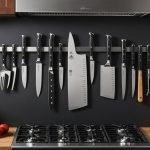Understanding the Benefits of a Kitchen Herb Garden
Growing herbs on your kitchen windowsill amplifies your culinary experiences and introduces unique flavours to your meals. Incorporating fresh herbs directly from your herb garden enhances your dishes with rich aromas and freshly-picked delight. Imagine the satisfaction of reaching for a handful of basil without leaving your kitchen!
In addition to culinary perks, there are environmental benefits to consider. By cultivating herbs at home, you reduce the demand for store-bought produce, which often involves long-distance transportation and excessive packaging. This reduction not only minimizes your carbon footprint but also supports sustainable living practices. As your herb garden thrives, you become part of a more eco-friendly solution without sacrificing any gastronomic pleasure.
Additional reading : The ultimate guide to selecting ideal kitchen flooring for your uk coastal home
Furthermore, establishing a herb garden is a cost-effective approach to integrating fresh produce into your cooking routine. Instead of purchasing expensive, pre-packaged herbs at the supermarket, you’ll have a continuous supply right on your windowsill. This ongoing access to herbs like mint, rosemary, and thyme not only saves money but ensures high-quality, organic ingredients are always within reach.
Start with small steps and watch your kitchen herb garden transform both your meals and your impact on the environment!
In the same genre : Designing a dreamy breakfast nook: chic inspirations for your ideal uk kitchen
Choosing the Right Herbs for Your Space
Selecting the best herbs for a kitchen garden in the UK requires thoughtful consideration of both climate conditions and personal preferences. Many herbs not only thrive but flourish in the UK’s temperate climate. Such herbs include rosemary, thyme, and mint, which are resilient to cooler temperatures and can endure periodic rain showers. Basil, although more sensitive to the chilly weather, can still be successfully cultivated indoors on a sunny windowsill, providing it with warmth and light.
When choosing herbs, consider how frequently you use them in your cooking. Those who love Italian cuisine may prioritize basil and oregano, while fans of roast dinners might opt for rosemary and sage. Your selection should ideally reflect your culinary interests to ensure freshness in your dishes.
It’s crucial to consider the compact growth of herbs, especially in small spaces. For instance, chives and parsley have compact growth habits, making them suitable for windowsills or small pots. Meanwhile, herbs like mint spread rapidly and should be planted in individual containers to prevent them from overwhelming other plants. Remember, the right balance of usage and space efficiency will yield a thriving kitchen garden tailored to your needs.
Essential Materials and Tools for Setup
Creating a thriving indoor herb garden requires a thoughtful selection of gardening tools and materials. To start, ensure you have the right planting containers with adequate drainage. This will prevent waterlogging and support healthy root systems. Options include traditional pots with drainage holes or self-watering containers, especially suitable if you prefer low-maintenance varieties.
Soil is equally important. Use a high-quality potting mix tailored for herbs; it should be light, well-drained and rich in organic matter. Remember, herbs prefer distinct conditions, so choosing the right blend enhances growth and flavour.
For successful herb maintenance, several gardening tools are indispensable: a hand trowel, watering can, and a mister help with planting and hydration, while pruners allow you to harvest fresh leaves with precision. A small spade and gloves are also practical for repotting tasks, reducing mess and ensuring cleanliness.
Lastly, ensure your herbs have access to sunlight or, if necessary, supplement with grow lights. They mimic natural light, crucial for photosynthesis and vitality. By meticulously selecting these elements, you can create a rewarding herb-growing environment at home.
Step-by-Step Setup Instructions
Creating a successful windowsill garden requires understanding how to prepare containers, plant herbs, and position them for the best light.
Preparing the Containers
To start your herb garden, select containers that fit your windowsill and allow for adequate drainage. Containers should be spacious enough to accommodate your chosen herbs as they grow. You can repurpose old jars or traditional flower pots, but ensure they have holes at the bottom to prevent waterlogging. Placing a saucer beneath helps to catch excess water.
Planting Herbs
When planting herbs, opting for seeds or starter plants depends on your preference and patience. Seed planting is rewarding but requires more time. If you desire quicker results, starter plants are ideal. Use well-draining soil and plant each type of herb according to its specific depth requirement. Examples like basil thrive with a shallow planting depth, while rosemary needs slightly more space.
Positioning for Optimal Light Exposure
Light is crucial for herbs, so position your containers on a windowsill that receives ample sunlight, typically southern or eastern exposures work best. To create an optimal environment, rotate your containers regularly to ensure all sides receive equal light, preventing lopsided growth. If natural light is insufficient, consider supplementing with a grow light.
Caring for Your Herb Garden
Proper care is essential for a thriving herb garden, and understanding herb care tips is key to achieving this. Different herbs have specific watering needs. For instance, Mediterranean herbs like rosemary and thyme prefer drier conditions, so water them only once the soil is dry to the touch. On the other hand, herbs like basil and mint require consistently moist soil. To ensure you meet these diverse needs, tailor your watering schedule accordingly.
When it comes to fertilization, providing the right nutrients supports sustained growth. Herbs benefit from a balanced, all-purpose fertilizer used sparingly. Over-fertilizing can lead to excessive leaf growth with reduced flavour, so it’s best to fertilize every four to six weeks during their growing season.
Additionally, it’s crucial to monitor herbs for pests and diseases. Herbs are not immune to aphids, whiteflies, or fungal infections. Regularly inspect your plants for any signs of infestation or disease. Natural pest control solutions, such as neem oil or insecticidal soap, can be effective while remaining safe for edible plants.
By following these herb care tips, you can ensure your garden remains healthy and productive throughout the seasons.
Troubleshooting Common Herb Growing Issues
Herb gardens are delightful, but they occasionally present common problems. Struggling with wilting or yellowing leaves? This often indicates improper watering. Herb leaves may wane when overwatered or due to inadequate drainage. Conversely, underwatering can lead to similar symptoms. Monitor your herbs by checking the soil: it should be slightly dry before watering again.
Pest infestations can devastate lush herb gardens. If you notice tiny holes in leaves or a powdery substance, you might be dealing with aphids or spider mites. To troubleshoot these herb gardening issues, consider using a gentle insecticidal soap or try a natural solution like neem oil. Still facing troubles? Look for other pests or relocate the plant to an area with better airflow.
Fungus problems are another typical challenge. Spots on leaves or a fuzzy growth can signify this issue. To manage fungi, reduce humidity and ensure good air circulation around our plants. Additionally, apply a fungicide formulated for herbs if necessary.
Remember, care practices should adapt based on seasonality. During cooler months, herbs might need less water and grow slower. Understanding these nuances ensures a thriving herb garden.
Harvesting and Using Your Herbs
Harvesting herbs requires some finesse to ensure the plant remains healthy and productive. Best practices involve cutting herbs in the early morning when their oils are most concentrated. Use sharp, clean scissors to snip just above a leaf node. This encourages the plant to grow new shoots, thus providing even more harvest opportunities. Avoid taking more than one-third of the plant at a time to prevent stress.
Culinary uses for herbs are vast and deliciously versatile. Fresh herbs can transform a simple dish into a gourmet masterpiece. Toss fresh basil into a caprese salad, sprinkle parsley over roasted vegetables or infuse olive oil with rosemary for a fragrant drizzle. The addition of fresh herbs can significantly elevate flavours and presentations, making ordinary meals exciting.
Preserving herbs ensures you can enjoy their vibrant flavours even in the off-season. Consider drying them by hanging small bunches upside down in a cool, dark place. Alternatively, freeze herbs like dill and chives in ice cube trays filled with water or olive oil for a ready-to-use flavour boost. These methods retain aroma and potency, ensuring year-round use in your culinary adventures.
Inspiring Ideas for Your Herb Garden Setup
Finding creative herb garden ideas can transform your space into a stunning visual and practical addition to your home. Whether nestled by a kitchen window or adorning your living room, these thoughtful arrangements breathe life into any setting.
Aesthetic Arrangement of Herbs
An aesthetically pleasing herb garden isn’t just about the plants; it’s about how they’re showcased. Consider using mismatched pottery for a quirky twist or uniform terracotta pots for a classic look. Group herbs by height or colour for visual balance. This approach ensures your kitchen window decoration captures attention and complements the rest of your decor.
Vertical Gardening for Small Spaces
If space is a concern, vertical gardening is the perfect solution. Use wall-mounted planters or a tiered shelf to grow herbs vertically, making the most of limited square footage. Hanging them on a window frame lets natural light aid their growth while adding a modern touch to your kitchen window.
Herbs as Functional Art
Integrating herbs into your decor means coupling utility with beauty. Arrange herbs in decorative clay planters or glass jars, turning them into functional art pieces. Not only do they enhance your space aesthetically, but they also offer fresh herbs right at your fingertips for cooking.











